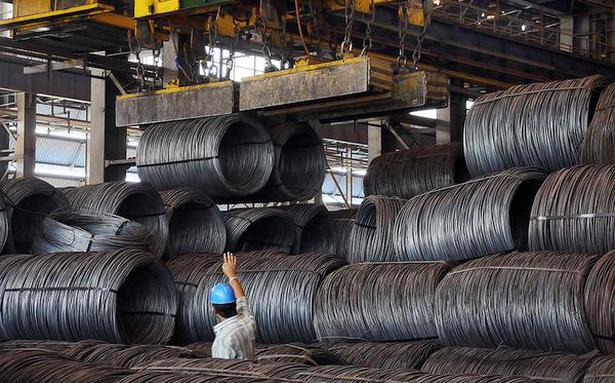India’s industrial production grew 1.9% in March, just slightly up from the 1.7% recorded in February, with output growth remaining weak at just 0.9%, just a bit better than the 0.8% in the previous month.
This is the fifth straight month that the Industrial Production Index (IIP) growth has been below 2%. Power generation and mining output increased by 6.1% and 4.5%, respectively.
However, on a sequential basis, industrial production rose 12.5% in March from February 2022 levels, according to rapid estimates by the National Statistics Office (NSO). While production of primary and consumer goods rose month-on-month, this was largely offset by a decline in capital, infrastructure and intermediate goods expansion rates, noted ICRA chief economist Aditi Nayar.
Output of consumer durables continued to contract for the sixth straight month, shrinking 3.2% in March, while output of consumer non-durables declined for the third straight month, falling 5%.
Infrastructure and construction goods were up a healthy 7.3% and primary goods were also up 5.7%. However, production of capital goods and intermediate goods increased only slightly, by 0.7% and 0.6% respectively. This is the slowest pace of growth for capital goods in three months.
“Capital goods numbers are disappointing… Clearly the investment cycle has not started and is being postponed again due to the war situation and uncertainty,” said Madan Sabnavis, Bank of Baroda’s chief economist.
The continued decline in consumer durables and non-durables reflects the lack of a recovery in consumption, and hopes for a recovery are slim as rising prices will further restrain consumption, he stressed.
“Industrial production trends have remained lackluster and manufacturing, the largest contributor to industrial growth, has remained weak,” said Rajani Sinha, chief economist at CARE Ratings.
“For the Indian economy to recover, it is very important that consumer spending starts to improve, which in turn will help improve capacity utilization and jump-start the private investment cycle,” she said, while noting that higher inflation will further dampen spending.
Ms Nayar said the outlook for the coming months is not too rosy thanks to the rise in global commodity prices.
“Persistent tensions could also impact corporate earnings and dampen the investment climate, affecting capital goods and infrastructure/construction goods production. Also, the supply chain impact of the ongoing lockdowns in China, coupled with geopolitical tensions, will continue to pose downside risks for the production of sectors dependent on key commodities from Russia, Ukraine or China,” she warned.


